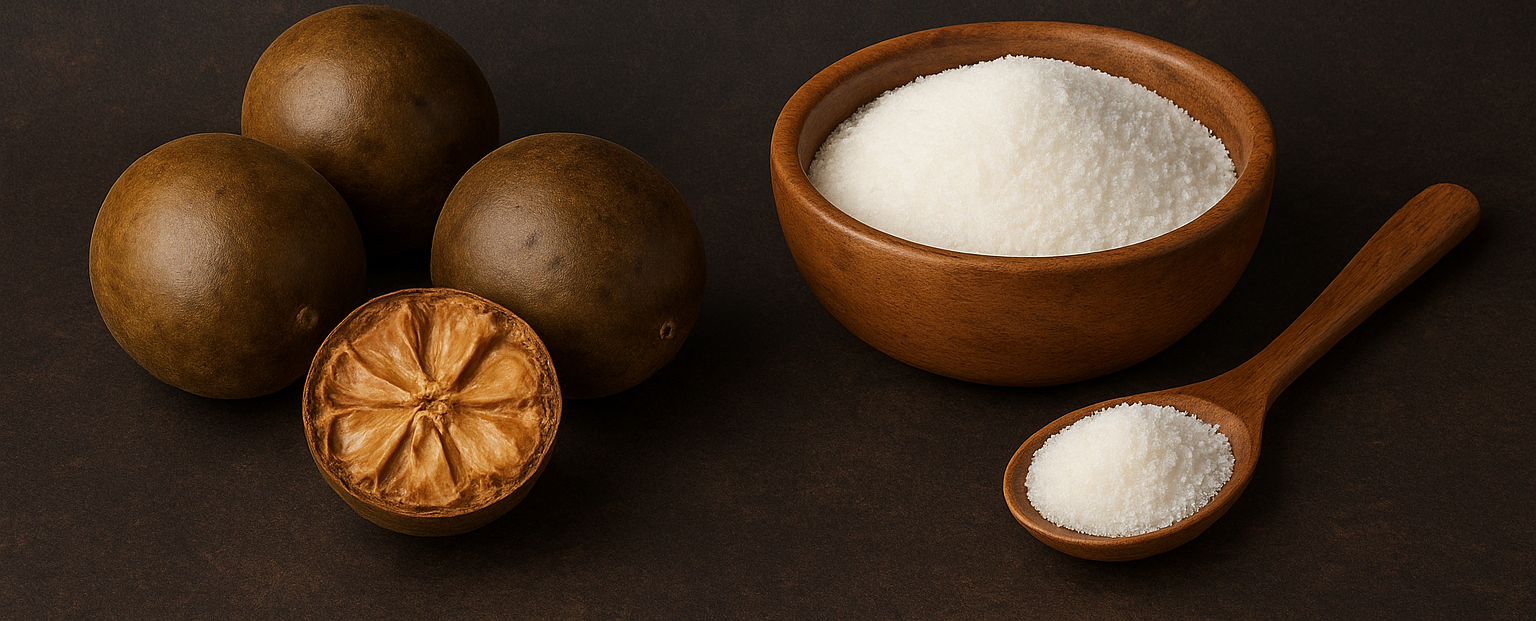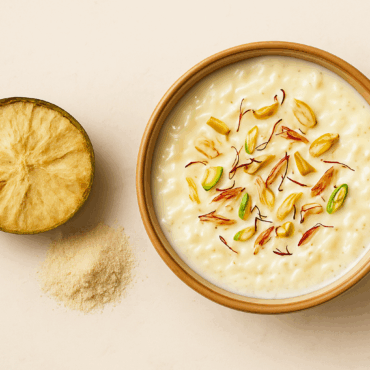What is Monk Fruit? The Natural Answer to Your Meetha Cravings
| On Jul17,2025
If you’re asking, “what is monk fruit?”, you’re not alone. This unique, natural sweetener is quickly gaining fame in India as the ultimate solution for satisfying meetha cravings without the guilt. Imagine enjoying the sweet taste you love in your desserts and chai, but with zero calories and none of the health worries of sugar.
Let’s dive into exactly what is monk fruit and why it’s becoming a must-have in health-conscious Indian households, especially with the festive season right around the corner.
Allow us to introduce you to your new best friend: Monk Fruit. This isn’t a new invention. It’s a small, green melon-like fruit that was discovered centuries ago by Buddhist monks in the pristine mountains of Asia. They cherished it for its intense sweetness and its unique properties, using it in traditional remedies and as a natural sweetener.
So, What is Monk Fruit Exactly? A Quick History
Monk fruit, also known as Luo Han Guo, is a small, round fruit native to Southern China. It gets its name from the Buddhist monks who were the first to cultivate it centuries ago, using it for its healing properties. For generations, it was a well-guarded secret, prized in traditional medicine. Unlike sugar, which comes from cane, the sweetness of monk fruit comes from natural compounds in the fruit’s pulp.

How it Works: The Science of Zero-Calorie Sweetness
When people ask what is monk fruit and how it can be sweet with no calories, the answer lies in unique antioxidants called mogrosides.
During processing, the mogrosides are separated from the fruit’s natural sugars (fructose and glucose). These mogrosides provide an intense, clean sweetness but are metabolized differently by the body—they aren’t absorbed into the bloodstream as calories. This is the scientific magic that allows you to sweeten your food without impacting your calorie count or blood sugar levels.
The Top Benefits: Why It’s the Perfect Fit for You
Now that you know what is monk fruit, here are the key benefits that make it the ideal modern sweetener:
- Zero Calories & Carbs: Perfect for weight management and keto-friendly diets.
- No Impact on Blood Sugar: An excellent and safe choice for people with diabetes.
- No Bitter Aftertaste: Unlike other sweeteners, it doesn’t leave a metallic or bitter taste, so your food and drinks taste exactly as they should.
- All-Natural & Plant-Based: It comes from a fruit, not a lab.
This makes it the perfect guilt-free way to sweeten festive treats like kheer, ladoos, or your daily cup of tea.
👉 Order Sliminch now and avail the Sliminch Monk Fruit benefits today.







Pingback: Gulab Jamun, Halwa, Barfi... Healthy mithai recipes with Shirataki & Monk Fruit Magic.
Pingback: Avoid side effects: A Look at Monk Fruit Sweetener Sensitivities
Pingback: Erythritol: Monk Fruit’s Best Friend and its Surprising Benefits
Pingback: Monk Fruit Sweetener types: Golden or White? Your Ultimate Guide
Pingback: The Sweet Answer for Managing Blood Sugar: A Guide to Using Monk Fruit
Pingback: 5 Surprising Monk Fruit Benefits: It's Not Just About Weight Loss
Pingback: The New 1-Month Weight loss Challenge: Cut All Sugar, Use Only Monk Fruit
Pingback: Healthy Chai: How to Enjoy Your Favorite Drink during your Weight loss journey
Pingback: How to Look Slim in a Saree: The Secret to Losing Inches from Your Waistline Before the Festive Season
Pingback: Best Sugar Substitute: Why Monk Fruit is Winning Over Stevia in Indian Kitchens
Pingback: Sliminch Monk Fruit vs. White Sugar: The Ultimate Showdown across 4 factors
Pingback: Natural Sweetener of choice: Monk Fruit vs Stevia's Aftertaste